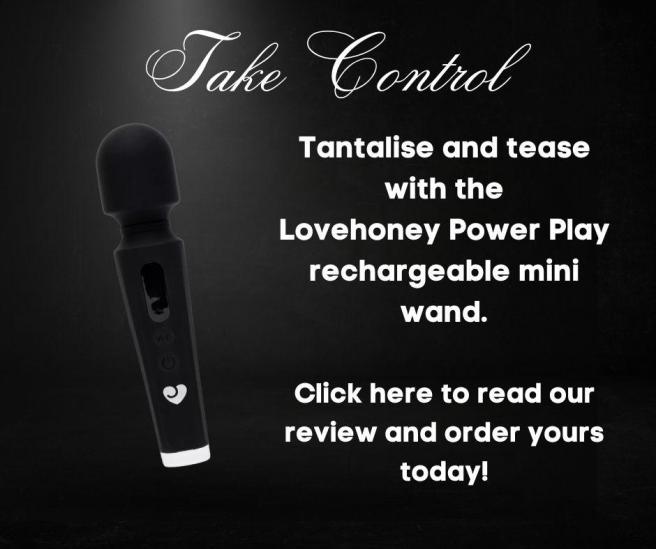In months gone by, I’ve talked about the safety abbreviations, SSC and RACK. While both are widely known and used in the BDSM community, the kink abbreviation family has a little known younger brother, PRICK.
If you’ve been in the BDSM community for any number of years, you could be forgiven for not knowing what PRICK is. PRICK is the abbreviated form of Personal Responsibilty, Informed Consensual Kink. It was first coined in 2009, three years after I joined the BDSM community.
Whew, it’s a bit of a mouthful, isn’t it? Whoever remembers that when it comes to gettin’ freaky?
Not so long ago,and certainly in my kinky lifetime, PRICK’s oldest brother, SSC, was up for some scrutiny. SSC, or Safe Sane, Consensual, was argued as being a bit vague. After all, how do we decide whether something is safe, or unsafe? How do we decide whether something is sane, or insane? What about the individuals among us who practice consensual non-consent? Do those who are concerned for welfare have a right to intervene? (NB. No!)
After SSC, a middle child was born, RACK. To help clear up the confusion and ambiguity surrounding SSC, RACK stood for Risk Aware Consensual Kink. It made sense and it was judgement-free. It was no longer down to the outsider to decide what was or was not within the thresholds of SSC, instead, it was for the individuals involved to decide. For those of us who like our kink a little bit rougher than some others, this was a moment to rejoice.
But all of a sudden, along comes PRICK to steal the show.
The first time I heard of PRICK, Matt showed me a kinky rope tutorial on TikTok. I have to be honest, I was in disbelief that the channel hadn’t been taken down. There are so many minors on TikTok that it would be far too easy for them to see something that they shouldn’t see. Concerns aside, I was rather flummoxed by this new kid on the block – what the hell is PRICK?
To me, and being a bit of an oldie in my early thirties, a prick is an obnoxious man. A prick is a slang term for a penis, or, perhaps to use the more correct definition, it means to make a small hole in something using a sharp tool. Not until now has a “prick” had anything to do with BDSM.
But that’s not to mean that it shouldn’t, but nor does it mean that it should. Hear me out.
Doesn’t PRICK Already Exist, Anyway?
As kinksters ourselves, PRICK feels a little bit like a “well, duh” moment. Of course it’s your responsibility to guarantee your safety! If you’re using candles, keep them away from the curtains. If something hurts too much, don’t forget to use your safeword. This is not a new concept, this is just how you make sure that the emergency services aren’t busting your door down while you’re balls deep in your missus. Why do we need another abbreviation for something that already exists?
Let’s talk about the “Informed” part of PRICK. There are many ways to be “informed” in BDSM, and that typically varies depending on the situation. For casual play sessions, it could be consenting to a particular activity. For kinksters in ongoing dynamics and relationships, it could be having a completed checklist or responding to “are you ready to begin?” with a “yes Sir/Madam”, right up to having a signed and dated (but not legally binding) BDSM contract. Being informed is somewhat ambiguous, given that one could argue that they have too little information to make an “informed” decision. What is more important, at least we feel, is clear, concise communication.
Do they consent to this scene, or this activity, yes or no? Do they understand what this activity involves, yes or no? Why does it need to be so complicated? Here’s another abbreviation for y’all – KISS!
Personally, and this really is us personally, PRICK kind of feels too wordy and, perhaps, a little bit selfish too. “Personal Responsibilty”, this is Personal. F*ck your kinky partner for a moment, this is all about you!
But let’s say, for a moment, that you and your partner aren’t merely kinky sex partners. Let’s say you’re lovers, or even married. Doesn’t that “personal responsibility” sound rather cold-hearted to the one you love?
In healthy romantic relationships, “you” and “I” sort of cease to exist, and “you” and “I” become “we”. Even if we do have some personal responsibility to ourselves, most of our investment goes into “us”, as a team. Of course you maintain that little bit of indepence to rectify a problem if it’s glaringly obvious, but for the most part you look out for one another.
For us, “Personal Responsibility” also kind of breaks what being in a Dominant/submissive relationship is all about. We did not enter it lightly, and it is not something we do here and there, just for fun. I trust Matt as much as he trusts me, I trust him not to do something that I won’t enjoy,and I trust him to keep me safe. As his wife and as his submissive, he trusts me to do the same and to not behave in a way that hurts him. Personal Responsibility sounds as though it requires you both to be guarded just in case, and when you’re guarded, you aren’t fully trusting your partner. Thanks all the same, but for us, having trust in one another is a lot calmer and happier than being constantly on edge.
Does PRICK Enable Abuse In BDSM?
Not so long ago I read a (since deleted) Reddit feed in which some commentors suggest that PRICK might enable some people to commit unsafe acts, all while blaming their partners for not exercising their “personal responsibility”. Of course we’d all like to think that that would never happen, and yet sadly, there are bad eggs in all walks of life. Both partners have a responsibility to be knowledgeable and to communicate clearly, and to press pause where there is a problem. If that doesn’t happen then the session is potentially unsafe – for both of you!

Eight Ways To Stay Safe In The BDSM Communtity
Regardless of which abbreviation you choose to use or why, it is always important to stay safe and to consider your scenes and partners carefully. Below are eight tips to help you stay safe and have fun:
1. Don’t Rush Into A BDSM Scene
In my very formative years I made this mistake, and fortunately for me it did not go nearly as badly as what it could have, but it could have! It’s easy to get your head in a spin when somebody approaches you and wants to play with you, but hold up! Remember, your safety and wellbeing depends on you taking your time. If you don’t know this person or what they want to do with you, it’s okay to say no.
2. Ask For References
Any good BDSM partner will have names of people who have played with them and can vouch for them, and if they don’t? Be aware! Sure, you might not be able to call them up like your employer might call your last boss up, but you could still speak to them in person or online. If they don’t have references or seem unwilling to name them, be careful about how quickly you trust them.
3. Watch How They Play With Others
Are they attentive? Controlled? Fun? Immature? Showy? How they play with others is how they will play with you, so if you don’t like what you see, stay away.
4. Watch How They Interact With Others
Do they treat bar staff and wait staff with respect? How do they interact with other guests? How do they interact when somebody else speaks to you? Do they appear to be hoarding up potential play partners? I’ve known submissives do this to Dominants, and I’ve known Dominants who don’t seem to ever meet their quota for owned submissives. If you’re looking for a monogamous connection and you’ve got a non-monogamist on your hands, there’s a high chance that it could all end in tears.
5. Talk About Your Boundaries
Want a really easy way to weed out a goodie from a baddie? Talk about your boundaries. Somebody who is respectful of others will respect your boundaries, and somebody who is not, will not, or they will try and push you to break them. Remember, if they don’t respect your boundaries then they don’t respect you!
6. Do Your Research
Informative BDSM websites like mine exist to help you better understand what you’re getting yourself into, so take full advantage of our knowledge. Every kinky person starts somewhere, asking questions and doing their homework just like you are. If you don’t know, hold off on an activity or a partnership until you do know. Never be coerced into a scene.
7. Speak To Others/ Attend Workshops
This applies to both getting references and learning about activities. If you see something you’re curious about, it’s usually okay to politely ask a question or two. Most people are more than happy to share their passions and maybe even gain a new friend. I’ve learned a lot about bullwhips by speaking to people at events, and even successfully cracked one with some help! A lot of BDSM clubs also hold (usually free) workshops, so find one (or twenty!) that you’d like to attend, and attend them. I really honed my wax play knowledge and abilities this way, so they’re definitely worth attending!
8. Join A Forum
In between events, sometimes you just want to bounce something off of someone. Maybe something isn’t sitting right, you aren’t sure what pegging really is or perhaps you want some thoughts on an idea, in that case, an online forum is a great place to be. Fetlife is a very common site with a lot of kinky people, but Reddit also has a vibrant BDSM community too – or you can come join us on the Lovehoney Forum!. Join one, or all of them, and get asking!
In Conclusion
At the end of the day I cannot tell you which abbreviation is right for you, or which one you should use or why. As Loving BDSM somewhat unhelpfully put it, you’re not a prick if you use PRICK. Personally (ahem), we beg to differ. You’re a prick if you don’t practice consensual kink, but which abbreviation you use is entirely up to you!
What do you think? Would you use PRICK, or wouldn’t you? Do you think PRICK is helpful, or does it make things more complicated than they really needed to be? Let us know in the comments! Why not give this post a like, share your thoughts in the comments or click here for more kinky posts!
Until next time!
Stay safe & have fun,

Disclaimer: This post contains Lovehoney-affiliated links. Please be aware that I may receive a small commission on any products you buy through my links. You will not be charged any extra on any purchases you may make.




My partner (Richard) and I agree that PRICK is just…too much. We’re pretty firmly in the RACK category. Richard says that PRICK sounds a bit passive aggressive and offloading responsibility onto the sub. Yes, you’re responsible for using your safeword as a sub, but as my Dom, he has the responsibility to pay attention to my safety. For example, every time he’s ever restrained me, he stops frequently and checks to make sure I’m okay, that I’m not losing feeling anywhere, etc. He doesn’t wait for me to say something. He checks.
LikeLike
Yes! Exactly it. Matt has often said that one of his signs is that I stop being cheeky. Even when I’m in subspace, apparently I often smirk as if something has amused me, I just can’t find the words to use. To me, PRICK seems like something you might use in dynamics with casual partners where you don’t want or plan to be committed to one another. In a long-term relationship, I think most people would be somewhat perturbed by the idea of you NOT taking some responsibility for your partner. I think it also kind of mixes up what a Dominant for a lot of people, because in Matt’s case (and perhaps in Richard’s too) he sees it as his duty to protect me, as my Dom, so PRICK wouldn’t work.
LikeLike
PRICK would definitely work . It means both parties take responsibility for the scene . So if you negotiated properly and told your Dom that you get cheeky in sub space with no words, then it is your responsibility to share that info and their responsibility to be aware of the situation during scene. It doesnt mean NOT taking responsibility for your partner its about taking shared responsibility for the scene, the relationship and the dynamic. After all no one is a mind reader. You cant just expect for things to be done for you if you dont take responsibility and communicate those needs
LikeLike
Hi there, thankyou for your comment.
You mention that I need to tell my partner that I am cheeky, but I feel as though you misunderstand my situation. My Dominant is my husband; we have been together romantically for 14 years, BDSM partners for 15, married for 9. I do not need to tell him that I’m cheeky, he knows that, because he knows me. It would be something of a “well, duh” moment for him.
We do have great communication, and we always have done. In some ways then perhaps we already practice PRICK, but we just call it communication and common sense instead of giving it a shiny new name.
Nobody is a mind reader, I agree. However, this is why communication is so important, and communication in BDSM has been around for much, much longer than PRICK has.
LikeLike
Thats not the point at all. Everyone involved is responsible for themselves. After all, we cant read minds. Its the Dom and Subs personal responsibility to not only advocate for themselves but to be aware that they are responsible for the well being of their partner . This DOM VS SUB debate is really dangerous. When youre negotiating with P.R.I.C.K as a tool there are no Doms or Subs at the negotiating table. Just two humans that have autonomy and are looking out for themselves , their safety , and the safety of the scene and their partner. It also means during a scene if anyone feels something is off , be it Dom or sub , they have the responsibility to call a color or end the scene. Its not passive aggresive. its not taking the responsibility off the Dom or the Sub.. Its being honest and mindful .
LikeLike
Hi there, thankyou for your comment.
We can agree that it is important for both parties to be responsible for themselves, for one another and their surroundings, and to communicate them whenever it is appropriate. This has been something that has been common sense and general knowledge (or at least should be) for many years in the BDSM community, even before PRICK was invented. Communication is absolutely vital, I agree, and I assert it (as well as various ways to communicate) on the “Communication in BDSM” page in my BDSM workshop. Furthermore, I do state there that it is crucial that both parties feel that they are on an even keel and are free to discuss any matters, without the Dom/sub dynamic being involved.
My argument in this post, in essence, is that we feel that PRICK offers nothing that hasn’t already been said before. It does make things sound as though each participant is responsible for themselves when really, as we have both said, then that just isn’t the case. Not communicating a need, want, problem etc is a failure in communication, which has been a core tenet of BDSM for years. Again, PRICK has not contributed anything new.
However, I can see in my post that I did not give enough examples of the types of situations that we might need to communicate in a BDSM session, and I will get this amended over the next few days. I thank you for bringing this to my attention.
LikeLike
The construct that PRICK off loads responsibility on it’s face is the direct opposite of what PRICK is. It places the responsibility on all partners equally. As a country we have fought long and hard for equal rights and PRICK helps codify this position in the kink community. The submissive is equally responsible for their part in the relationship and to infer differently is to stirp them of power and agency within a relationship.
It was mentioned that “PRICK offers nothing that hasn’t already been said before”, this is also true of SSC and RACK as well. The point is to get people aware and keep them aware of the need to take personal responsibility, as personal responsibility is the means having agency over ones life. As someone who has been in the lifestyle since the late 90’s I have seen the transition from submissive/bottoms who know absolutely nothing and played (SSC and RACK era) to now a community where education is a top priority and submissives/bottoms who start out by learning before playing (PRICK era). I am not saying that PRICK is or was the cause for this shift but I feel education is empowerment, as is personal responsibility is agency over ones life and PRICK helps keep that in the forefront.
If you enter into a scene without understanding what it is your about to embark on or what is to be expected because you choose to be ignorant, ask questions, or gain understanding then you can find yourself with a rude awakening. Let me pose this question is it wiser that a submissive/bottom trust what a Dom/top has told them, or have understanding of what is expected based on knowledge derived from unbiased education? I would say the later.
In my opinion is SSC should go away and is dangerous. The word safe or safety is so vague and totally carries a different meaning to each of us. This difference causes vast safety concerns and safety issues when two or more different safety expectations are present. I can’t tell you the countless times I have seen this in our community and all over the vague term safety.
LikeLike
Hi William, thankyou for commenting. I definitely agree that I too have seen some behaviours and practices that leave me asking a lot of questions about what “safe” really means, certainly at events, and yet I also know that it is not my place to intervene (the club I used to attend clearly stated that only the Dungeon Masters can stop a scene). For that reason I try to accept things as best as I can, on a YKINMK (YKIOK) basis. I might not like it, but it is not my scene to stop.
You asked me whether it is wiser that a submissive ask questions of their Dominant or gain an unbiased education, and certainly I’d agree that leaving our education entirely up to one person is incredibly dangerous. We need an unbiased education always, however, we do also need to (and to be able to) trust our partners. As such, this is why I won’t play with anyone new at events – we don’t know one another, we haven’t had any in-depth discussions at that point in time, I don’t know how safe they are etc. Perhaps that is me exercising PRICK in and of itself, though again I do stand by the idea that PRICK does open up individuals to victim blaming if they don’t fully understand what it means (quickie online hook-ups open themselves up for this sort of thing). Personally and above all else I use RACK, which I believe carries broadly the same connotation as PRICK as is quite apt for the BDSM community!
I do agree with you that SSC can be a bit abmbiguous at times, but whether PRICK is the panacea? I’m not totally sure.
I thought this post was a finished project, but i can see again now that there are points that need reshaping and redefining still.
LikeLike